By Gwyneth Saldanha | Sep 25, 2016
A post-mortem sounds like it would be kind of morbid and depressing, but at Nuvation Engineering it’s actually a really positive thing. A Project Post-Mortem (PPM) is one of the tools we use to continuously improve. It analyzes the execution of a project: its successes and failures, the lessons learned, and areas of improvement for future electronic product designs. The goal isn’t to point fingers or blame individuals; it’s to obtain a set of actionable items for improving the next project.
One of the keys to a successful PPM process is having a facilitator that is a neutral and unbiased presence. This ensures that all other participants—Project Managers, Design Engineers, etc.—play an equal role, everyone is listened to, and nobody’s feelings get hurt. At Nuvation Engineering the Quality Manager (QM) owns and facilitates the process.
How the PPM process works
1. The Project Completes
They say time heals all wounds. This is great for wounds, and terrible for continuous improvement. That’s why we conduct the PPM right away, before all project details fade into a hazy but fond memories of completed deliverables and working prototypes. Our QM kicks off the Post-Mortem as soon as a Project Manager declares that a project is finished.
2. The QM sends out a questionnaire for team members to complete
The questionnaire is used to identify discussion points for the PPM Meeting. The PPM Questionnaire is filled out by everyone who participated in the project: Technical Leads, Project Managers, Program Managers, Account Managers, Engineers, and any other team members. The main objectives of the questionnaire are to:
- Identify what went well, so that we can repeat it in the future
- Identify things that didn’t go well, so that we can improve for the next project
- Determine if the project was a success
- Identify any re-usable design elements and intellectual property
3. Responses are sent back to the QM
The QM keeps the results confidential to encourage everyone to be honest and spill their guts. Some sample questions are:
- How would you rate Nuvation Engineering’s internal communication?
- How likely do you think the client would recommend Nuvation Engineering?
- Did IP reuse save time or effort in the project?
4. The QM reviews the responses and produces a Summary of Questionnaire
The QM uses the Questionnaire Summary Document as a guideline to create an agenda for the PPM meeting. It is distributed well in advance of the meeting so that all team members know what’s coming.
5. A PPM meeting is held, with the QM acting as Chair
The PPM Meeting includes the key players on the project and/or those participants whose feedback on the questionnaire requires a more detailed examination. The QM makes sure the meeting is efficient, effective, and inclusive.
6. The QM generates a PPM Report
The PPM Report ensures that action is taken to implement the PPM meeting findings. The PPM Summary Report contains:
- Summary of Project
- Lessons Learned
- Recommendations List
- Reusable Design Elements
7. The report undergoes peer review
The report is reviewed by peers not associated with the project, and provides the opportunity for more objective feedback.
8. The report is finalized and published
All the participants are sent a draft of the report to make sure their ideas were heard. Once the report is finalized the final version is published. The reports are available to all engineers – whether they were part of the team involved or not. This visibility is important so that everyone can learn from the PPMs.
9. The QM updates the Recommendations List with resolutions
The Recommendations List helps keep us accountable to continuous improvement. Nuvation Engineering Project Managers implement the recommendations for the next project, and the results are examined in the PPM when the project is completed, and the cycle continues!



